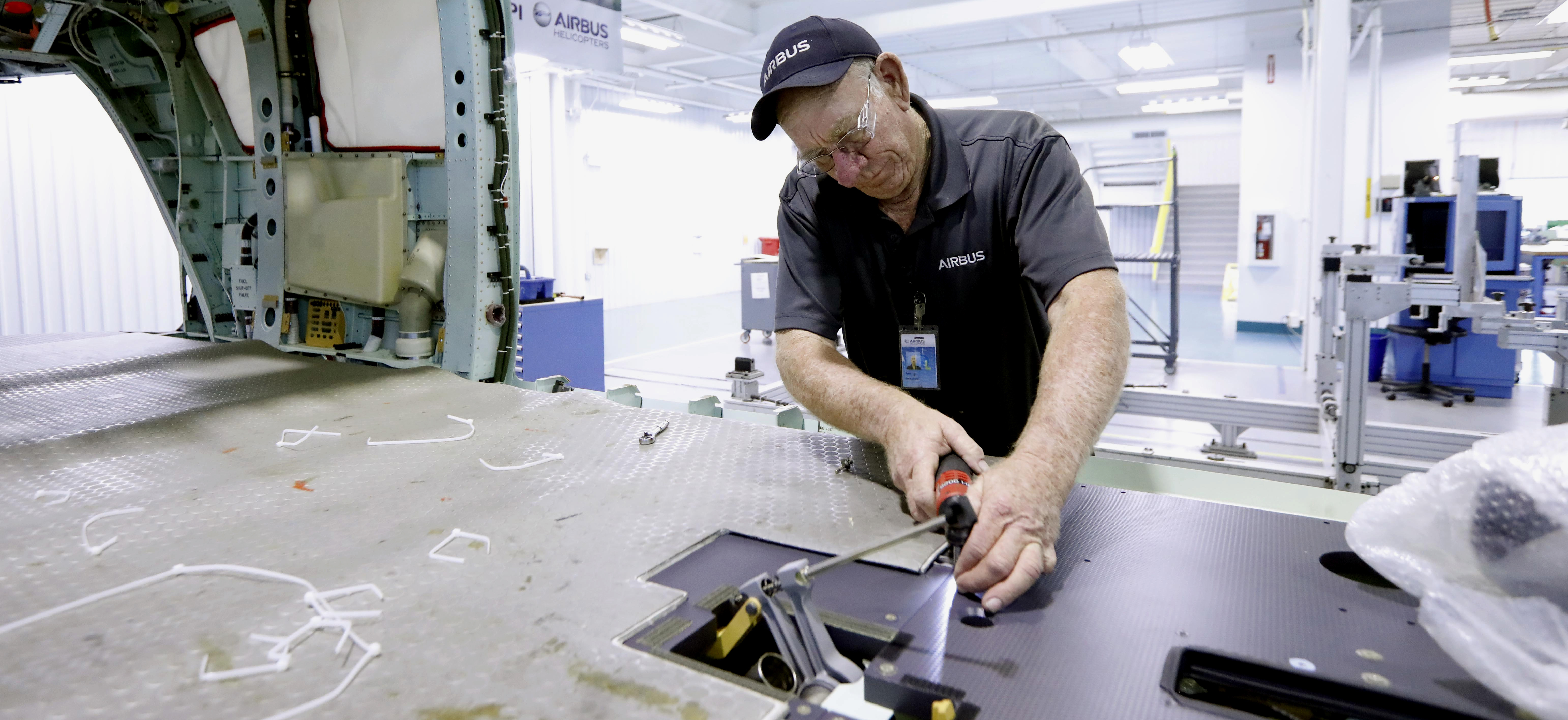
<p>Technician Ken Eubanks works on the floorboard of a helicopter at the Airbus Helicopters, Inc., manufacturing facility in Columbus, MS, on May 4, 2018. (AP Photo/Rogelio V. Solis)</p>
The nature of work is changing. Technological innovation, automation, a decrease in traditional factory jobs, and the rise of the gig economy mean the average American worker can no longer expect to remain employed with a single company, or even in a single occupation, throughout their entire working lives.
Many businesses are moving away from a conventional model of offering full-time positions with benefits to flexible, part-time employee arrangements to remain competitive. And the economy is thriving as employers continue adding jobs, leading to higher demand for skilled workers in industries such as advanced manufacturing and health care.
These factors make lifelong learning crucial for workers to be able to reskill or upskill according to labor market demands. Local workforce systems can help.
What is a local workforce system?
A local workforce system is a set of organizations and activities that prepares people for employment, helps workers advance in their careers, and builds a skilled workforce to support local employers and the local economy.
Local workforce system actors, such as workforce development boards, community and technical colleges, and community-based nonprofits, use various public, philanthropic, and private funding sources to implement innovative, collaborative education and training initiatives that address the changing nature of work.
Reskilling program success stories
Local workforce system initiatives increasingly involve direct engagement with local or regional employers to ensure training programs meet specific skill needs.
The Kansas Advanced Manufacturing Program, for example, helps low-income unemployed and underemployed workers in Wichita and surrounding counties access employer-driven training for jobs in aviation and other advanced manufacturing industries. The program’s partners include public workforce agencies, employers and industry groups, and two- and four-year colleges.
And in North Texas, Project OnRamp, a partnership between JPMorgan Chase & Co. and the Dallas County Community College District, provides certified nurse aides free access to education, training, supplies, testing, and job placement assistance to help them become patient care technicians.
People who complete the ProjectOnRamp program see an average 25 percent increase in wages (from $10.81 to $14.50 an hour). The project is also building relationships with area health care employers, who benefit from having qualified job candidates to fill an increasing demand for middle-skill health care professionals.
A guide to understanding local workforce system initiatives
In an economic and political climate that has left many Americans uncertain about the future of work and sustainable employment, now is a critical time for people to learn about innovative local workforce system initiatives that support lifelong learning.
The Urban Institute recently released an online Guide to Learning about Local Workforce Systems that explains what local workforce systems are, what they do, what strategies they use, and how system stakeholders can connect and partner to address the latest workforce development challenges.
By providing an overview of a typical local workforce system—including key functions, players, and comprehensive resources—the Guide offers local communities a tool to inform strategic planning, direct service provision, and collaboration on workforce issues.
Let’s build a future where everyone, everywhere has the opportunity and power to thrive
Urban is more determined than ever to partner with changemakers to unlock opportunities that give people across the country a fair shot at reaching their fullest potential. Invest in Urban to power this type of work.